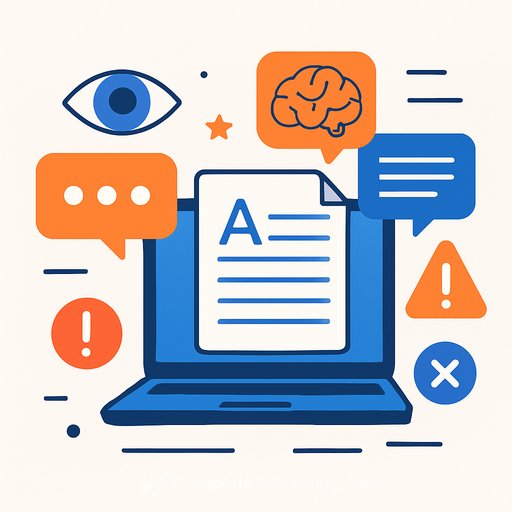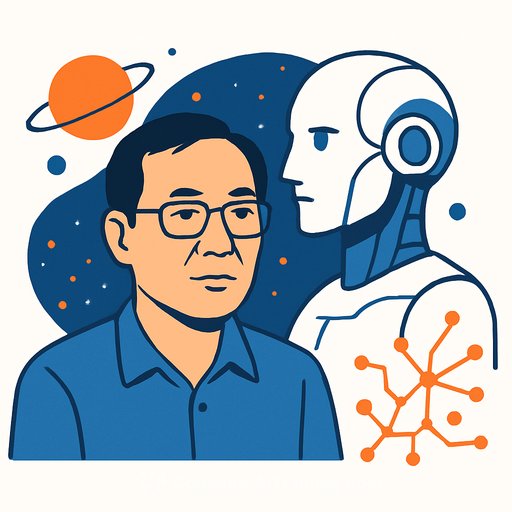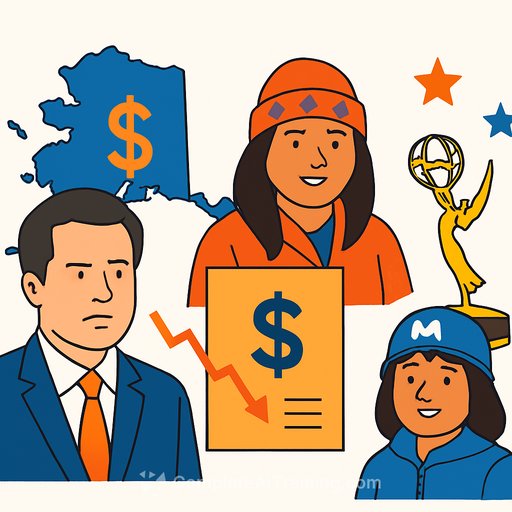Ken Liu on AI, reality, and how writers can build the next near-future myth
Asking AI a quick question mid-conversation has become normal. That's the baseline of Ken Liu's new near-future thriller, "All That We See Or Seem" - a world just a step ahead of ours, where AI is slightly more embedded into everyday life.
The story follows Julia Z, a renowned hacker pulled into a missing-person case. The missing wife, Elli, is an oneirofex - a dream artist who guides audiences into a shared dream using AI to read the crowd's mood. It's a fresh creative job that treats dreams as a social medium and a stage.
AI isn't savior or doom - it's an amplifier
Liu's stance is clear: AI doesn't make life universally better or worse. It amplifies what's already there - our strengths and flaws - in specific, human ways. That framing is gold for fiction.
- Write AI into mundane moments, not just plot pivots. A character chatting with an AI companion to kill time says more about culture than a dramatic lab scene.
- Show trade-offs. Let AI make someone sharper in one scene and more detached in the next.
- Keep the tone neutral. Readers will judge the outcomes; your job is to make them plausible.
Dreams as creative tech
Liu treats dreams as a serious mode of knowledge. The oneirofex isn't a gimmick - it's a practical answer to a real question: how does human art stay relevant in an AI-saturated world? Answer: by inventing new forms, new venues, new roles.
- Design speculative jobs that could exist tomorrow. Define the skill, the tool, the audience, and the business model.
- Make the UX tangible: consent flows, safety rails, mood detection, ticketing, venue rules, and post-dream aftercare.
- Explore ethics: what responsibilities does a "dream guide" owe to a crowd?
Don't predict the future - mythologize it
Liu argues sci-fi's job isn't prediction. It's myth-making. Mary Shelley's creature endures not because the lab process was accurate, but because the figure became a shared symbol we use to think through new tech. Today's parallel: a model that learns by ingesting our literature, then mirrors our patterns.
- Name the core anxiety or desire behind your tech (control, imitation, intimacy, dependency, status).
- Create a figure or practice readers can invoke later: the oneirofex, the ghost feed, the digital familiar.
- Tie it to a ritual: nightly sessions, licenses, vows, or penalties that give the idea weight.
- Stress-test it with timeless questions: What does this cost the self? What does it outsource? Who pays the hidden bill?
Read Frankenstein (Project Gutenberg) for a masterclass in tech-as-myth.
Code, law, story: different symbols, same craft
Liu moved from programming to law to fiction. The through-line: arranging symbols under a rule system to produce outcomes. That's a practical lens for writers.
- Treat your story's "system" like an API: inputs (actions, prompts), constraints (rules, costs), outputs (consequences).
- Write the rules of your world plainly. Then let characters try to bend them.
- Use form as leverage: contracts, prompts, logs, and transcripts can reveal theme without lecturing.
Character over spectacle: fight monsters outside and inside
Julia Z's arc pairs external threats with internal conflict. She's driven by a hard sense of justice, but her past and shadow will press back. That dual pressure keeps high-tech plots grounded.
- Mirror lines: external chase vs. internal guilt; public stance vs. private impulse.
- Give your lead a code that costs them something on every page.
- Let past decisions return with interest. Tech is the stage; the psyche is the plot.
Practical prompts to build your near-future
- Where does AI appear in a quiet scene? Commuting, flirting, grieving, procrastinating.
- What human job appears because AI exists (not despite it)? Who works it, who regulates it, who resents it?
- What's the mythic figure readers will reference after your book? Name it. Give it rules.
- What's the dream your culture still believes in? How does your story test it?
Skill up your AI literacy (for writers)
- AI tools for copywriting (curated overview)
- Courses by job: pick learning paths that match your writing work
Why this matters
AI will keep folding into daily life. Your edge as a writer is to show the small truths: how people speak, stall, connect, and dream with it nearby. Build the myth that helps readers think - then let them decide what they want to live with.
Your membership also unlocks:






